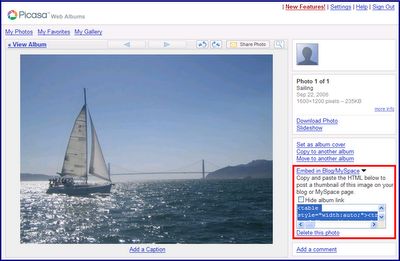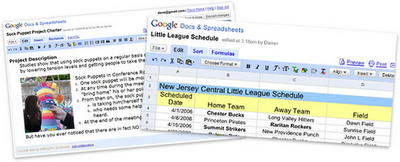There are many Search Engine Optimization tactics, but try to find the best combination and don't sacrifice the usability and performance of your website. Here is some basic information about improving your source code from an SEO perspective:
Avoid Classical 404 Error Pages
The 404 - File Not Found - page is presented to the user by the server as an error page. The user gets this message directly from the server of the website he is trying to visit. This error page is supposed to appear only when the server cannot find the requested location and is unsure of its status.
In the vast majority of cases, the 404 error emerges for pages that were moved or even deleted or the layout of the site or page information changed.
Many hosting companies offer a 404 redirect page. This means that when a user enters the URL of any page of your domain, and that page does not exist or can no longer be found, you can automatically redirect the user to a specified page - usually your home page or your sitemap.
Pay special attention when you decide to delete certain pages. Remember to redirect them to a main page of your site using the 301 (Moved Permanently) HTTP response code.
You can greatly improve the user friendliness of your website by creating a custom 404 page.
- Present a message of apology for the inconvenience;
- Try to ease the user's way back to your site. Introduce error messages and include evident links to the home page, sitemap, and contact page;
- Offer assistance and encourage the user to continue to search for the information he needs on your site. You could even include a search box right on the error page;
- Keep the same design for the error page as for the rest of the website.
But remember that the best strategy for a 404 error page is to prevent it from coming up altogether, as many customers might be left with the impression that the whole website does not exist and not just the specific page they were trying to access.
Keep Away From Orphan Pages
An orphan page is a page that is not linked to another one and thus cannot be found by spiders. To avoid having orphan pages on your website, check regularly that all your pages are linked to each other.
Search engines consider sites with orphan pages to be unprofessional, and not worthy of getting a high rank. This kind of website is under construction or is the result of a poor design process. If your pages aren't linked properly search engines won't index them and will consider them irrelevant for the search.
Pay attention to the fact that some search engines don't correctly index websites that use HTML frames. When spiders crawl through your internal pages, they index each individual page and display them as orphan pages in search results. Most frame designs include a content frame and a navigation frame.
Visitors require both frames to navigate through the site. Create a JavaScript to check if the page is loading correctly, and load the frameset. In this way, users won't be able to open pages outside the frame. This is a very easy way of losing clients.
Use 301 Redirect Pages
To avoid displaying a 404 error page, set up a 301 redirect page. The code 301 means "moved permanently" and it's the easiest way to preserve your search engine rankings for that page.
There are two ways of generating proper 301 redirect pages. If your site is hosted on a Linux or Unix server create a .htaccess file to add the redirect to your server's web root.
The .htaccess file contains specific instructions for certain requests, including security, redirection issues and how to handle certain errors. If it is hosted on a Windows or IIS server then the 301 redirect can be set up in the Administrator's section of the server software or through the DNS (Domain Name Server) zone.
Make a habit of reviewing the log files which contain data sent by your server. Search engine spiders often make critical decisions based on what your server tells them through the server's headers.
Pay attention, an improper 301 redirect can cause you big problems, since your website might fail and users won't be able to visit your pages. Setting up a correct "301 redirect" assures that you'll stay high in search rankings.
Create a Sitemap
A sitemap is a web page that lists all the pages on your website. They are intended both for users - to find easier the information they need, and for search engines to index pages.
Your sitemap link should be right on your home page. In this way spiders are sent directly to the place where all your content information is gathered. Sitemaps can improve SEO, however, be advised that they only take into consideration a limited number of links to those pages.
To make sure that spiders check your whole site and have more chances to get indexed, it would be a good idea to use a sitemap generator. You can use ROR sitemaps that are readable by all search engines.
ROR is a sitemap tool that uses XML feeds to describe your website. ROR sitemaps allow search engines to match text search with structured information, thus obtaining more relevance for your site. This kind of sitemap helps search engines to better understand your website content - products, services, images, articles, etc. By creating a file with product names, descriptions, prices, images, availability, affiliate programs, and any other relevant information customers can find you easier.
Don't Overuse Dynamic Pages
Dynamic web pages include dynamic content - images, text, etc - which change without the page being reloaded. Client-side languages like JavaScript and ActiveX are usually used to create these types of web pages.
Search engines don't rank dynamic pages with many parameters well. If you choose not to turn your dynamic URLs into static ones, at least put the most important parameters in your URLs first and try to limit dynamic parameters to no more than two.
Spiders can't read the text rendered as graphics. Any text that you want the spiders to read and index should be written out as text. At the very least, put any text that appears in graphics into the images' ALT attribute.
A slightly better alternative is to write your text in Flash, but remember to have a "Skip this intro..." link that takes visitors (and spiders) to the text-rich content of your site. Don't neglect this information if you want to optimize your search engine strategy.
Put .CSS and JavaScript into External Files
For a search engine, improperly formatted code will have a negative impact on your rankings. Since search engines read only a certain amount of information on a web page, you should try to increase the text content to HTML tag ratio.
If you have too much HTML code, the text content won't be seen entirely. For reducing HTML code, utilize hand coding using external .css files and Javascript.
Make Sure You Have Well Formatted [X]HTML
Try to fix as many of the HTML errors as possible. Although the search engines don't rank websites that have standard compliant code better they tend to "read" them easier. Use the W3 HTML Validator to check the validity of your code.
For a successful Search Engine Optimization strategy, take into account all of the aspects presented here. It takes time, effort and patience to achieve a higher rank in the main search engines. The idea is to have a long term strategy that makes your website stay on top for an extended period of time.
Author : Google AdSense News







